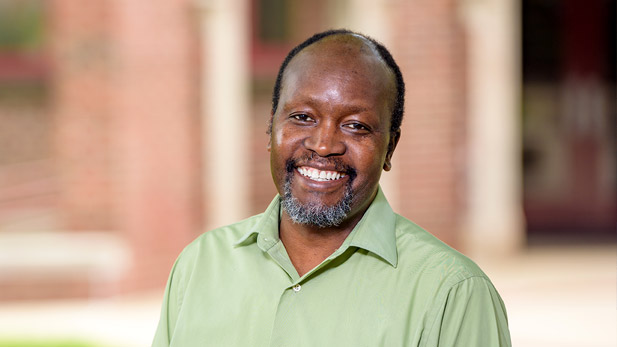Onyancha Now Leading the Mechanical Engineering Department

Richard Onyancha has brought international perspectives and experiences to the faculty in his 12 years as a mechanical engineering professor. He also co-founded the Independent Projects and Research Opportunities Program.
A new academic year has brought a transition in leadership within the Department of Mechanical Engineering. Richard Onyancha is now leading the institute’s largest academic department, following Lori Olson’s five-year term of service.
Onyancha, a member of the Rose-Hulman faculty for 12 years, specializes in manufacturing, solid mechanics and metrology. He spent the 2014-15 school year as a Fulbright Faculty Scholar at Zambia's Copperbelt University.
A native of Kenya, Onyancha uses his engineering skills to help others throughout the world and is passionate about bringing global educational experiences to Rose-Hulman students. He has helped organize summer field studies and a Faculty Without Borders visit to his native land, and played a key role in starting Rose-Hulman’s new Global Experiences and Social Context course.
A co-founder of the institute's Independent Projects and Research Opportunities Program, Onyancha also is deeply committed to the value of undergraduate engineering. One of his immediate goals as department head is to provide more scholarship opportunities for students, along with expanding recognition programs for students, faculty and staff members.
Onyancha joined the Rose-Hulman faculty in 2007 after earning a doctorate in mechanical engineering from the University of New Hampshire. He received a master’s degree from Brunel University in London and a bachelor’s degree from the University of Nairobi in Kenya.
Olson, the previous department head, will return to teaching in the mechanical engineering department following a 2019-20 school year educational sabbatical to intensify research. She will work with several students and faculty colleagues on detecting breast cancer through the use of inverse problems.